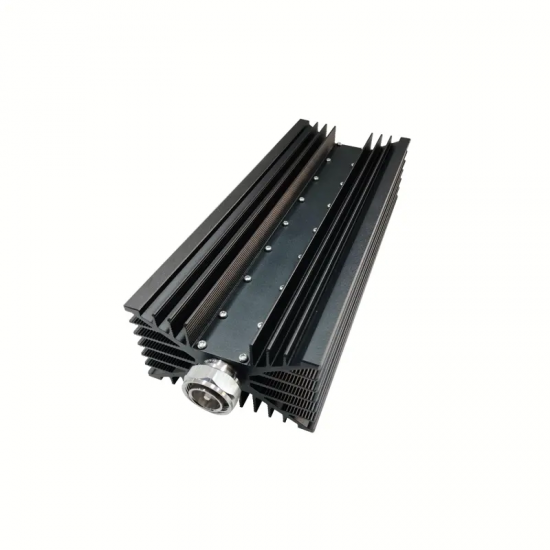-
 5G-Advanced Accelerates New Requirements for In-building RF Infrastructure
Apr , 28 2025
5G-Advanced Accelerates New Requirements for In-building RF Infrastructure
Apr , 28 2025
As 5G-Advanced (5G-A) technology emerges, it brings higher speeds, lower latency, and smarter network capabilities, reshaping expectations for in-building wireless systems. Modern facilities—such as offices, airports, and hospitals—now require more advanced Distributed Antenna Systems (DAS) capable of supporting higher frequency bands and broader bandwidths. Traditional infrastructure must evolve....
View more
-
 Which Is Better: Directional Coupler or Tapper?
May , 08 2025
Which Is Better: Directional Coupler or Tapper?
May , 08 2025
In RF and microwave systems, power distribution is a critical aspect that directly impacts system performance, reliability, and design flexibility. Two of the most commonly used passive components for signal splitting and power monitoring are directional couplers and tappers. While they serve similar purposes in many systems, they differ significantly in structure, application, and performance. Un...
View more
-
 Yagi Antenna: Key Advantages and Primary Applications
May , 16 2025
Yagi Antenna: Key Advantages and Primary Applications
May , 16 2025
Key Advantages of Yagi Antennas: High Gain and Directivity Yagi antennas are highly directional, focusing radio frequency (RF) energy into a narrow beamwidth. This directional radiation pattern allows for significant gain (typically 8–15 dBi), making them ideal for long-distance communication. The focused beam minimizes interference from unwanted directions, improving signal-to-noise ratios. Cost-...
View more
-
 What Is an RF Attenuator and Why It Matters in RF Systems
May , 21 2025
What Is an RF Attenuator and Why It Matters in RF Systems
May , 21 2025
In the world of wireless communications, signal integrity and system protection are paramount. An RF attenuator plays a crucial role in both areas. Whether you’re working in a lab environment, designing a base station, or setting up an indoor DAS system, RF attenuators help manage signal strength and ensure long-term reliability. What Is an RF Attenuator? An RF attenuator is a passive component de...
View more
-
 How To Test The Power of a Load
May , 21 2025
How To Test The Power of a Load
May , 21 2025
To test the power of a load, you can follow these steps: Gather Equipment: You'll need a multimeter, wattmeter, or power analyzer, depending on the accuracy required. Connect the Load: Ensure the load (such as a resistor, motor, or appliance) is properly connected to the power source. Measure Voltage: Use the multimeter to measure the voltage across the load. Make sure to set the multimeter to the...
View more
-
 What Is the Difference Between a Power Divider and a Power Splitter?
Jun , 18 2025
What Is the Difference Between a Power Divider and a Power Splitter?
Jun , 18 2025
1. Basic Function — What Do They Both Do? At a high level, both power splitters and power dividers are passive RF components designed to: Take one input signal Split it into two or more output signals Maintain specific impedance (typically 50Ω or 75Ω) Preserve signal integrity as much as possible These devices are commonly used in test setups, antenna feeds, distributed antenna systems (DAS), and ...
View more
-
 What's the Difference Between Microstrip and Cavity Power Dividers?
Jun , 26 2025
What's the Difference Between Microstrip and Cavity Power Dividers?
Jun , 26 2025
1. What Is a Microstrip Power Divider? A microstrip power divider is fabricated using PCB (printed circuit board) technology. It typically consists of microstrip lines, branch networks, and resistors. Often based on Wilkinson design principles, microstrip dividers offer good impedance matching and moderate port isolation. Key Features of Microstrip Power Dividers: Compact and lightweight — Ideal f...
View more
-
 Passive Component Bottlenecks and Solutions in Operator Networks
Sep , 03 2025
Passive Component Bottlenecks and Solutions in Operator Networks
Sep , 03 2025
In operator network deployment, passive components play a crucial role in ensuring stable and efficient RF signal transmission. With the rapid evolution of 5G, DAS (Distributed Antenna Systems), and private networks, the performance requirements for passive devices have become more stringent. However, components such as power splitters, couplers, and combiners often encounter performance bottlenec...
View more
 How To Test The Power of a Load
May , 21 2025
How To Test The Power of a Load
May , 21 2025